
Table of Contents
- Introduction to GPT-3: Origin and Evolution
- Features of GPT-3 AI
- How Does GPT-3 Work?
- How Can Businesses Use GPT-3 AI?
- Examples of GPT-3 AI Applications
- Key Takeaways
- Conclusion
- FAQs
In May 2020, OpenAI introduced the world to the Generative Pre-trained Transformer 3 or GPT-3, which it is popularly called. GPT-3 is an auto-regressive language model powered by artificial intelligence (AI), deep learning (DL), and machine learning (ML) that has been trained in trillions of words and phrases to empower the algorithm to produce text similar to that written by humans.
GPT-3 is a 175 billion-parameter transformed model that can be used to write marketing copies, blogs, articles, email, social media content, and so on.
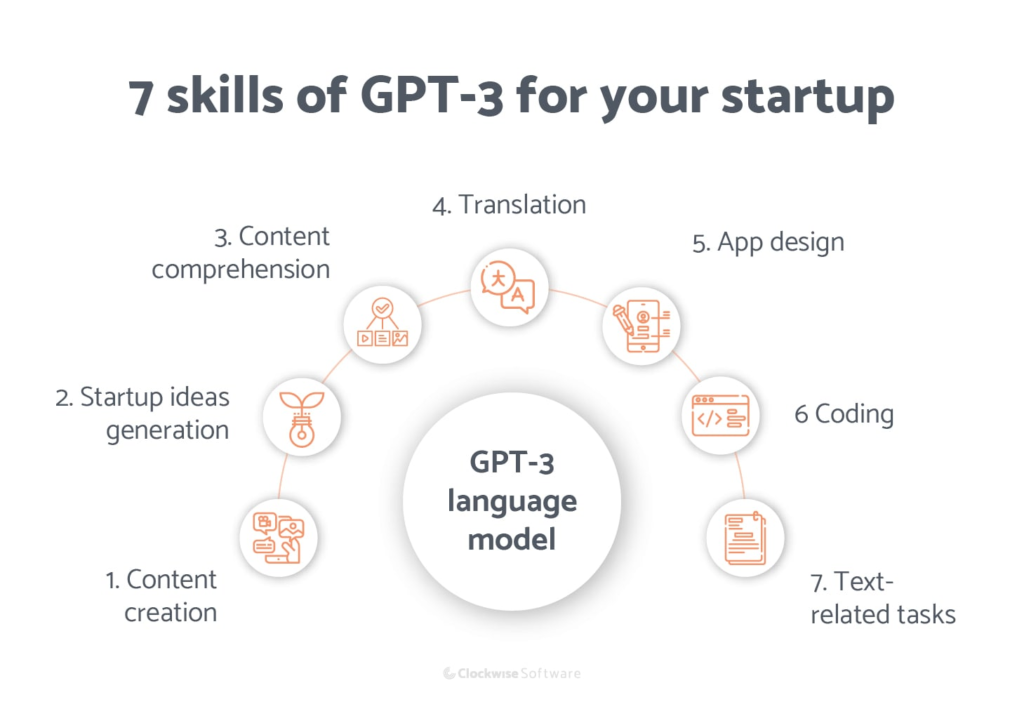
Introduction to GPT-3 AI: Origin and Evolution
OpenAI is a research and deployment company, co-founded by Elon Musk, that works to ensure that the benefits of artificial general intelligence reach everyone. Its key focus area is the highly autonomous system that can imitate and even outperform humans at tasks that are most economically valuable for the benefit of everyone.
In 2017, the Transformer – a neural network powered by deep learning models – was born. In 2018, OpenAI researchers posted their original research on generative models. These generative models were language models powered by artificial intelligence, which could be trained to generate human-like text, using humongous amounts of texts as datasets.
OpenAI researchers worked to eliminate tedious hand-labeling and the requirement for human intervention in these generative models. Since the generative models were based on the Transformer, the technology came to be referred to as a Generative Pre-trained Transformer.
In May 2020, a group of 31 engineers and researchers from OpenAI announced the third generation of this path-breaking technology – GPT-3. The GPT-3 AI is so advanced that it would be difficult for human evaluators to distinguish between text written by humans and that generated using GPT-3.
Today, GPT-3 is the largest artificial neural network that has ever been created. It is being used by hundreds of applications across various sectors – productivity, education, gaming, etc.
Features of GPT-3 AI
GPT-3 AI generates texts using deep learning algorithms that have been pre-trained in textual datasets. Here are some of the tasks GPT-3 can accomplish:
- Answer questions
- Write essays
- Summarize texts
- Translate text from one language to another
- Create computer code in any programming language
- Create poetry
- Named-entity recognition
- Text sentiment analysis
- Reading comprehension
- Convert English text to layouts or SQL queries, etc.
The key feature that makes GPT-3 AI the most attractive neural network model to work with is that it can perform all these tasks at near-human levels – the output of these tasks would be almost perfect, and for most users, it would be hard to distinguish between the output of GPT-3 and that of actual human efforts.
How Does GPT-3 AI Work?
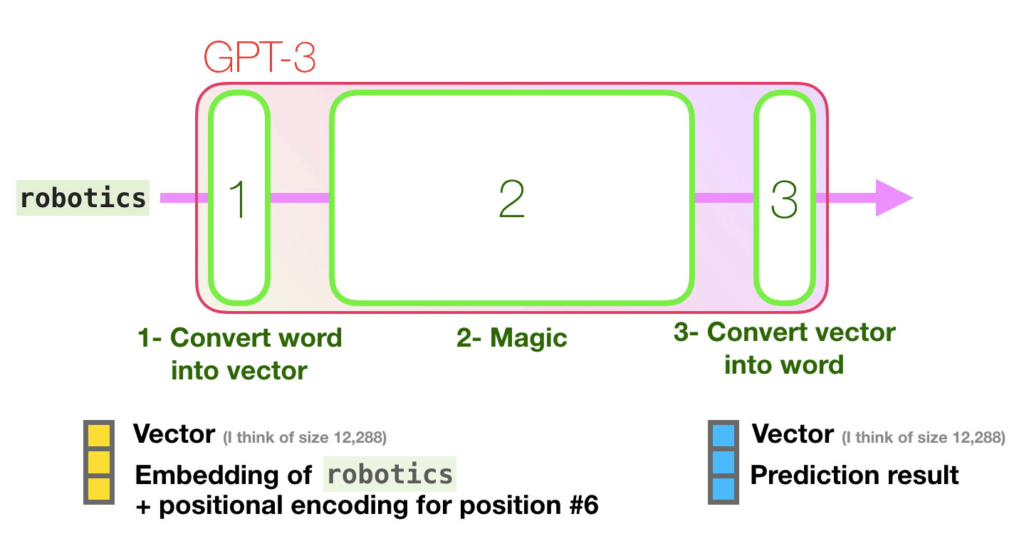
To understand how GPT-3 works, one first must understand how the algorithm has been trained. GPT-3 works based on the pre-training the model has undergone. The OpenAI team used four approaches to train the GPT-3 model:
- Fine-tuning: This involves training the model with a vast number of datasets
- Few-shot: This involves giving the model multiple demonstrations of how it could accomplish a particular task – training with multiple examples.
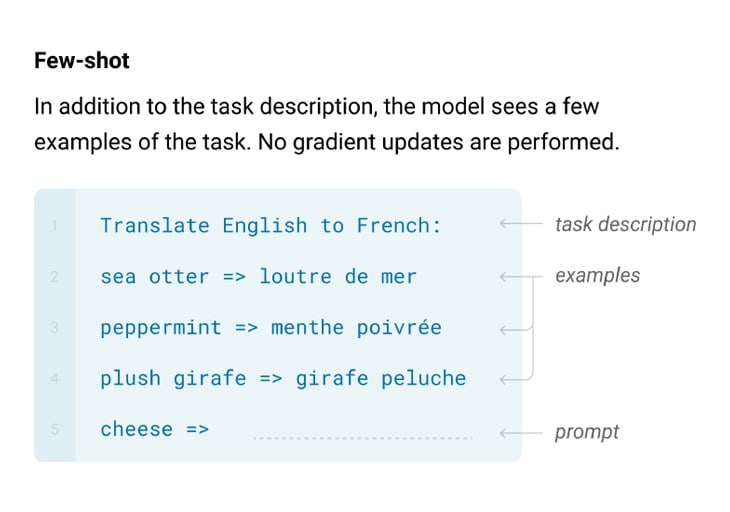
- One-shot: This involves training the model with just one example – a textual explanation of the task and a demonstration of its accomplishment.
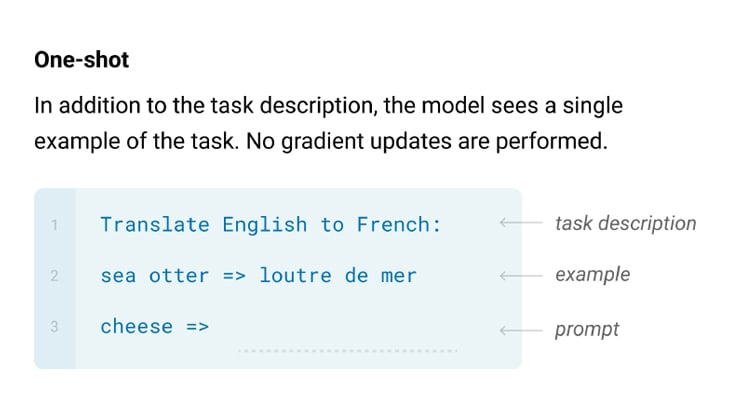
- Zero-shot: This involves training the model using only a natural language description of the task that needs to be accomplished.
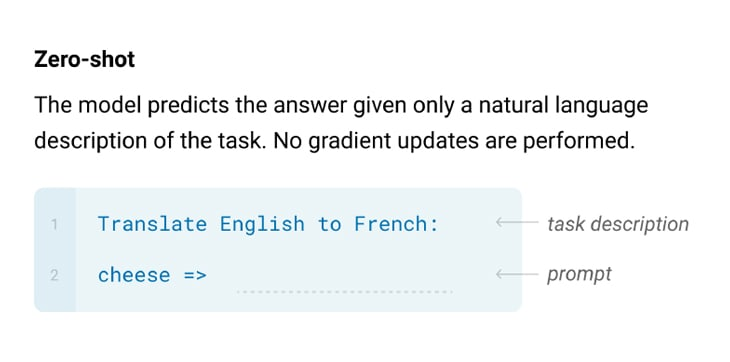
The data sets used to train the GPT-3 model are:
- Common Crawl (a filtered version, a compilation of online texts)
- WebText2 (Compilation of online texts)
- Books1 (Compilation of books)
- Books2 (Compilation of books)
- Wikipedia Corpus (Compilation of Wikipedia texts)
GPT-3 has used the highest compute power for training – no wonder it is so efficient and accurate.
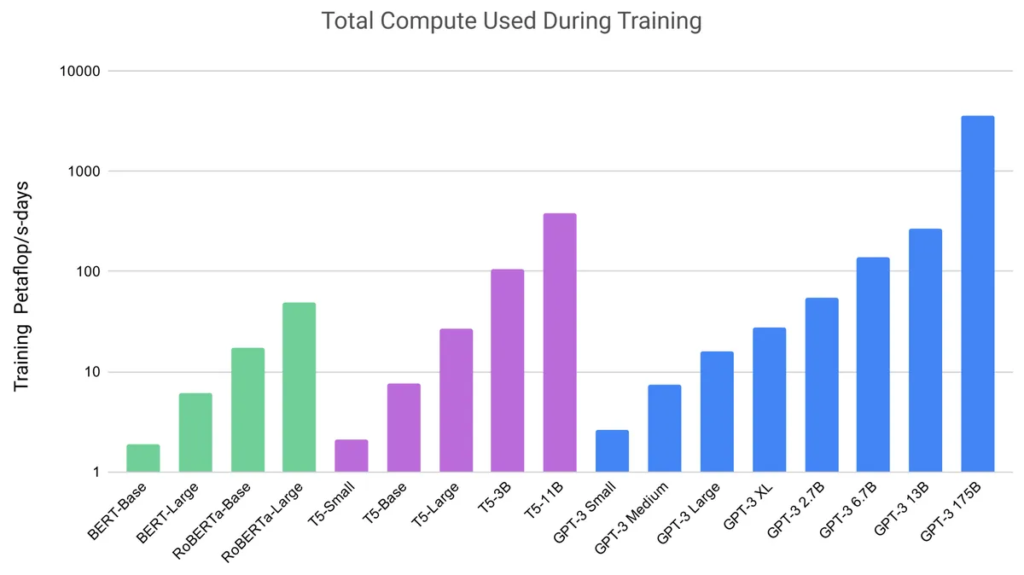
The model is designed to predict the next word in its assigned task iteratively. For example, the sentence, “The quick brown fox jumped,” needs to be translated from English to French, and people are using GPT-3 to do the same. The transformer model of GPT-3 will function as illustrated in the below image:
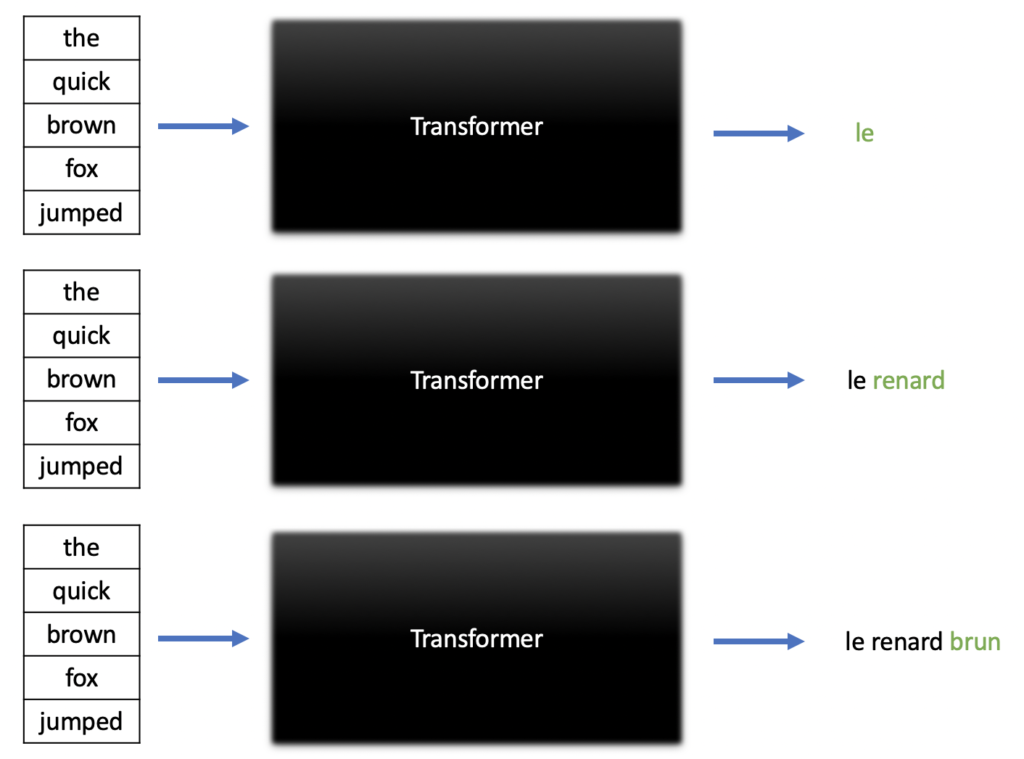
GPT-3 uses an unsupervised learning subset of machine learning. This is because the data that the algorithm that GPT-3 is trained in does not include any labels or information on what a correct or incorrect response would be. The probability of how accurate the algorithm’s response is for the user’s requirement comes from the text that the algorithm is being trained in.
GPT-3 uses semantic analysis techniques to study the individual words and their meanings. It also understands how these words’ usage differs from other words present in the text. It studies the usage of words and sentences, then breaks them apart and tries to rebuild them by itself. This helps it build an understanding of the usage of words and phrases and the context, tone, etc.
How Can Businesses Use GPT-3 AI?
As of now, GPT-3 is not an open-source algorithm, so you cannot freely access the code and use it. OpenAI provides the GPT-3 algorithm model through a commercial API that one can use instead. However, this API is in a beta stage (testing stage), so you would need to fill out the GPT-3 API Waitlist Form to join the waitlist to obtain this commercial API for GPT-3.
With the increased need for digitization and automation in businesses worldwide, GPT-3 could be a powerful tool to have in one’s repertoire.
Some prominent ways in which businesses can use GPT-3 include:
- Expanding the abilities of their existing applications to improve their standing in the market by offering more to the customers
- Providing voice or text-based user experience to assist users and improve engagement with customers by simplifying their interactions with the application
- Power chatbots with sentiment analysis capabilities for better customer interactions that feel almost human and intelligent rather than fixed defined responses
- Build cool websites at much lower costs, mainly for small businesses or any brand that doesn’t want to invest excessively in building a functional website.
- Facilitate real-time natural language translation and advanced text predictions for users to improve accuracy and speed.
- Moderating content being published online on different platforms to help identify fake news, conspiracy theories, trolling, anti-social campaigns, etc., and keep users safe.
- Generating content for online articles and blogs to keep boosting the SEO of websites
- Translating the texts into multiple languages helps businesses function smoothly across multiple geographies without language barriers.
- Summarize long texts into bite-sized summaries that are more palatable for users and can be shared easily for better customer engagement.
- Formulate powerful captions for social media posts to build an enviable social media presence
These are just some ways businesses can use GPT-3 for different purposes. The technology is still relatively new, but it surely packs impressive capabilities, and the possibilities are endless.
Examples of GPT-3 AI Applications
According to API, to date, over 300 applications have deployed GPT-3 Open AI spread over a range of industries and domains – from gaming to education and everything in between. Some of the examples of these applications are as below:
1. Peppertype.ai
Pepper Content recently Peppertype.ai, which aids content creators to create great content in just 10 seconds across the entire gamut of creation, management, and distribution of content.
Peppertype.ai is built using GPT-3 AI and uses machine learning and AI to offer its customers a seamless experience. All you need to do is feed the tool with the information required and get great quality content including blog ideas, tweets, product information, newsletter content, podcast and marketing ideas, etc.
2. Viable
Viable is a tool that helps brands understand customer feedback more easily by summarizing the feedback received from customers into concise, crisp, and insightful summaries. GPT-3 works to understand the theme, emotion, etc., from the customer feedback surveys that the brand conducts, using its sentiment analysis capabilities. This helps brands know where they can improve and what they need to continue doing.
3. Virtual Beings
Fable Studio uses GPT-3 to produce a new genre of interactive stories for user consumption. The stories being created are a mix of an artist’s vision, artificial intelligence capabilities, and emotional intelligence capabilities, which build compelling narratives. This is a massive feather in GPT-3’s cap as it showcases the technology’s creative abilities, something hardly any other technology in the current times can accomplish.
4. Algolia
One of the Algolia products, Algolia Answers, provides relevant, effective, and quick semantic search options for its users. The brand has partnered with OpenAI to integrate GPT-3 capabilities in its advanced search technology, and the Algolia Answers product is a result of that partnership. GPT-3 helps the product answer even the most complex queries with ease and better accuracy.

Key Takeaways
- GPT-3 is an auto-regressive language model powered by artificial intelligence (AI), deep learning (DL), and machine learning (ML) that has been trained in trillions of words and phrases to empower the algorithm to produce text similar to that written by humans.
- OpenAI is a research and deployment company, co-founded by Elon Musk, that works to ensure that the benefits of artificial general intelligence reach everyone. Its key focus area is the highly autonomous system that can imitate and even outperform humans at tasks that are most economically valuable for the benefit of everyone.
- GPT-3 uses semantic analysis techniques to study the individual words and their meanings. It also understands how these words’ usage differs from other words present in the text.
- Peppertype.ai is built using GPT-3 AI and uses machine learning and AI to offer its customers a seamless content-based experience.
- Summarize long texts into bite-sized summaries that are more palatable for users and can be shared easily for better customer engagement
Conclusion
In conclusion, OpenAI’s GPT-3 AI is a potent neural network that can help businesses automate their content, marketing, customer service, and many other functions with a human touch but without any human supervision. It can not only help them bring down costs but can also improve user experience as well as brand value. The technology does come with its limitations which a business would need to consider carefully.
The technology is relatively new but has lots of potential and has a long way to go. GPT-3 has a bright future, and more and more businesses from different industries or domains will keep embracing the technology to gain a competitive advantage.
GPT-3 AI generates texts using deep learning algorithms that have been pre-trained in textual datasets.
FAQs
GPT-3 AI writes with flawless grammar, accurate punctuation, and zero spelling mistakes. The tool can create numerous articles and books in just a day! It is always learning how to write by reading millions of articles and books available on the internet.
Generative Pre-trained Transformer 3 (GPT-3) is an autoregressive language model that uses deep learning to produce human-like text. The third-generation language prediction model in the GPT-n series (and the successor to GPT-2) was created by OpenAI, a San Francisco-based artificial intelligence research laboratory.
GPT 3 can create texts with a language structure — like answers to questions, essays, articles, summaries, translations, etc.
– Text classification (i.e., sentiment analysis)
– Question answering
– Text generation
– Text summarization
– Named-entity recognition
– Language translation
GPT-3 can help businesses automate their content, marketing, customer service, and many other functions with a human touch but without human supervision.
Latest Blogs
Explore how Google’s 2025 AI search updates triggered ranking chaos. Learn actionable strategies to adapt your SEO for AI Overviews, zero-click searches, and SERP volatility. Stay ahead now.
Learn how to rank on AI search engines like ChatGPT, Perplexity, and Gemini by optimizing your content for authority, structure, and relevance. Stay ahead in AI-driven search with this strategic guide.
Explore the best healthcare SEO services for your medical practice. Improve online visibility and effectively reach more patients in need of your services.
Get your hands on the latest news!
Similar Posts
Artificial Intelligence
3 mins read
How to Rank on ChatGPT, Perplexity, and Gemini: A Strategic Guide for Marketers

Artificial Intelligence
5 mins read
How Free AI Tools for Content Creation Can Boost Your Content Strategy

Artificial Intelligence
5 mins read